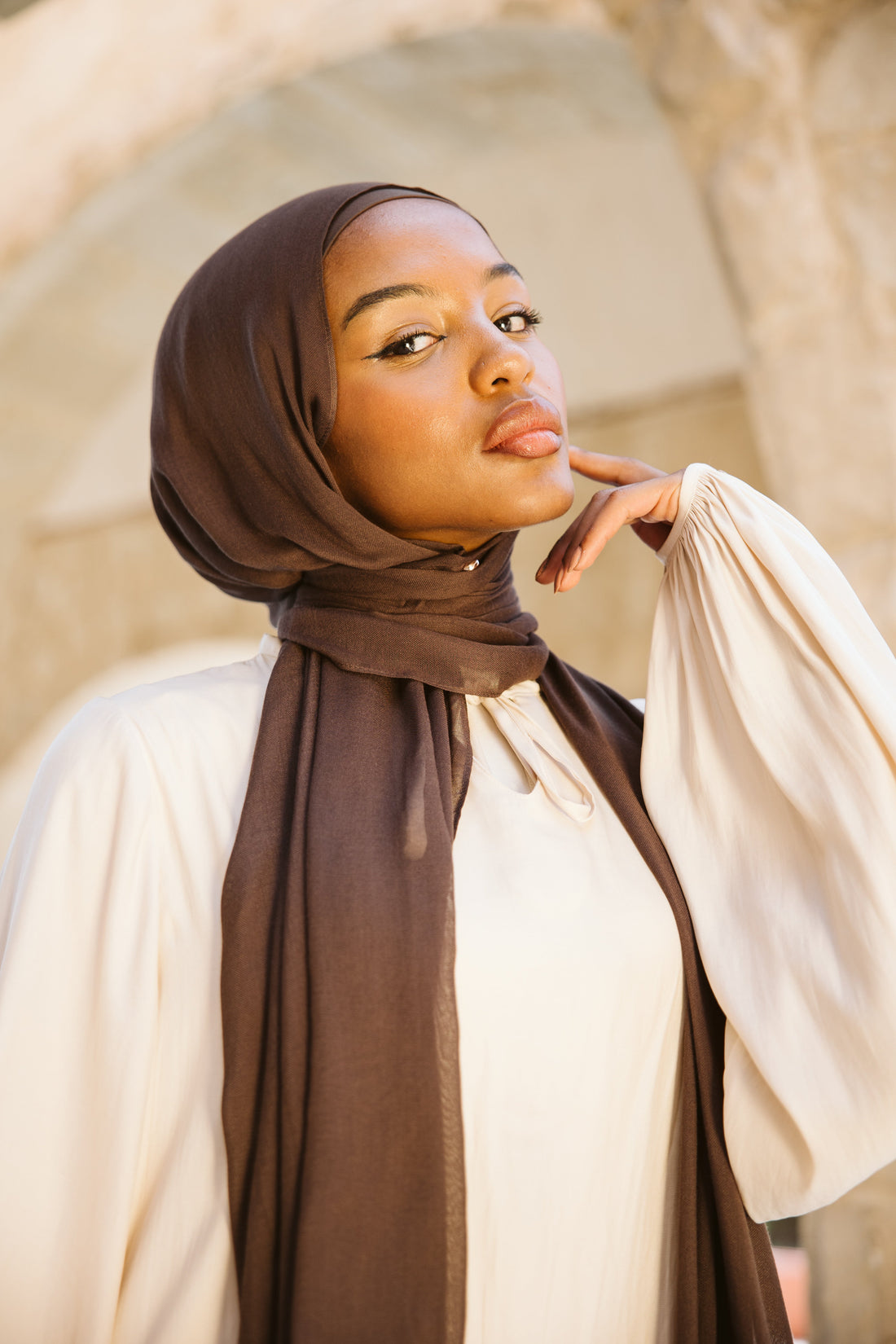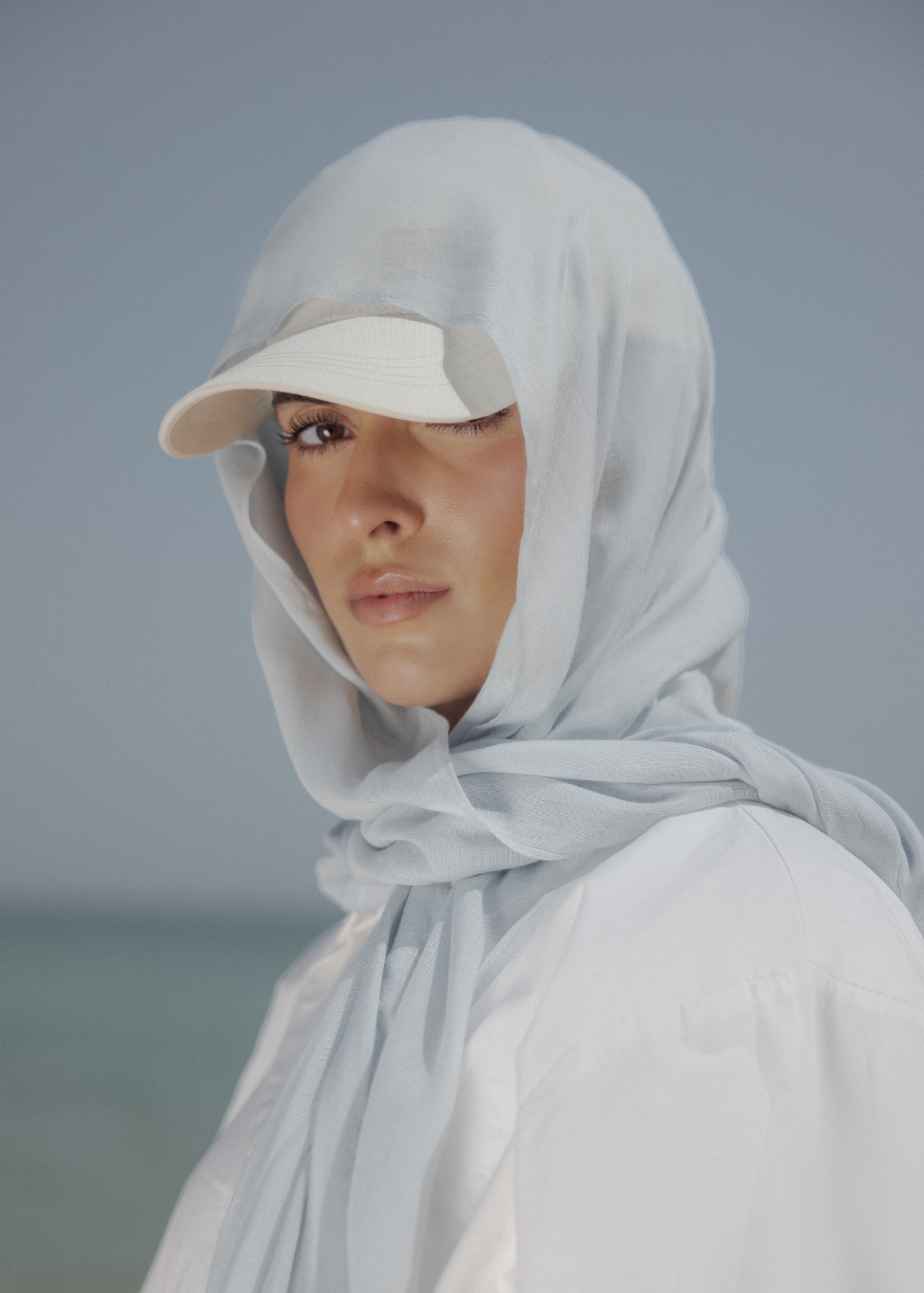
Bamboo fabrics may seem new to the market, but they’ve been around for centuries. In terms of the hijab industry, bamboo is relatively the new girl in town.
She’s giving us several benefits, but one of the best of all is its sustainability. Bamboo fabric has gained new mass recognition, particularly in the modesty market, thanks to its eco-friendly production process.
Stick around to learn more about why bamboo hijabs should be your next sustainable step.
Understanding Bamboo Fabric

When you first think of bamboo, the plant’s long stalks probably come to your head, maybe being fed to a panda.
Well, manufacturers have come up with a way to take these canes and make fabrics out of them.
How? Well, there are two different ways you can make it, chemically or mechanically.
Mechanical Process
In the mechanical process, the bamboo shoots are first crushed. Then, workers apply natural enzymes to break down the bamboo’s rigid material, creating a mushy result.
From this mass, manufacturers extract natural fibres and spin them into yarn, which is then used to produce the fabric.
Chemical Process
As for the chemical production, bamboo undergoes the viscose process. This way involves submerging the bamboo leaves and shoots in a chemical bath.
Once they’ve dissolved in the liquid, the fluid then goes through small holes called spinnerets. The fibres that come out of the spinnerets harden and are used to produce the final bamboo fabric.
Is Bamboo Fabric Sustainable?
Now, comes the biggest question, is bamboo sustainable? Let’s review the points.

Less Water Used
Bamboo isn’t a thirsty plant. Compared to cotton plants, this sustainable green needs much less water, conserving the critical resource.
No Pesticides Needed
According to studies, “Bamboo often thrives without the need for pesticides and fertilizers, reducing the environmental impact associated with chemical use in agriculture.”
Fast-Growing
Did you know that bamboo shoots grow four centimeters every second? The plant is one of the fastest-growing plants on earth.
Why? When bamboo canes grow, they don’t grow in diameter like other trees. Instead, their thickness remains constant.
Plus, the eco-friendly plant doesn’t need to wait for leaves to grow. It can easily get its nutrients from its parent plant’s underground stem.
Consumes More CO2
Bamboos have a heavy appetite for carbon dioxide, compared to other plants. With such high carbon dioxide absorption rates, this plant releases large portions of oxygen into the atmosphere.
On top of all these sustainability pros you get from choosing bamboo, check out our article on
The Benefits of Bamboo Hijab: A Comfort Beyond Measure
Final Thoughts
So, why not give bamboo hijabs a try? They’re not just a trendy addition to your wardrobe, they’re a step toward a greener, more sustainable lifestyle.
The fabric offers all the comfort and style you love while being kind to the planet. You’re making a choice that supports eco-friendly practices and helps reduce your environmental footprint.
So, next time you’re shopping for hijabs, your wardrobe (and the planet) will thank you!





